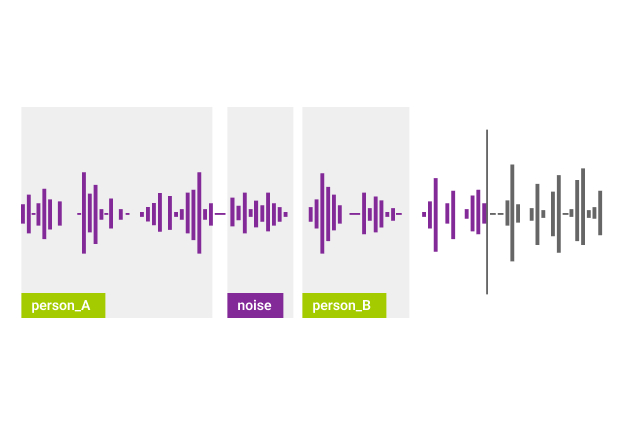
Introduction to Audio Data Annotation
Introduction to Audio Data Annotation
As the world steadily shifts toward voice-enabled technologies, audio data is becoming one of the most valuable assets in the artificial intelligence (AI) lifecycle. From smart assistants and real-time transcription tools to biometric authentication and emotion-aware customer service, the applications of audio AI are expanding across industries.
But none of these advancements are possible without accurately annotated audio datasets. For decision-makers building scalable, compliant, and future-ready AI products, audio data annotation is not just a technical step—it’s a strategic imperative.
In this blog, we break down what audio annotation involves, the key tasks behind it, the practical challenges, and why partnering with a domain-focused solution like FlexiBench can turn this complex process into a competitive advantage.
What is Audio Data Annotation?
Audio data annotation is the process of labeling or tagging audio files with metadata that trains machine learning (ML) and AI models to understand human speech, acoustic signals, and other auditory cues. Whether it’s transcribing spoken language, identifying speakers, or classifying environmental sounds, annotation gives audio data the structure and clarity it needs to power intelligent systems.
Unlike visual or textual annotation, audio data presents unique challenges—it’s continuous, layered, and often influenced by variables like tone, pitch, noise, and speaker accents. This makes precision, context awareness, and quality control absolutely essential.
Core Annotation Tasks in Audio AI
Audio annotation isn't a one-size-fits-all process. Depending on the application, annotation can vary widely in technique and complexity. Here are the most common task categories:
1. Speech Transcription
One of the most foundational tasks, speech transcription involves converting audio into text. This can be as straightforward as single-speaker dictation or as complex as multi-speaker dialogue across different languages and accents.
Applications: Voice assistants, closed captioning, meeting transcription tools, customer service bots.
2. Speaker Diarization
Diarization involves labeling different speakers in a single audio file—“Who said what, and when?” This task helps AI differentiate between voices in multi-party conversations, which is vital for transcription, moderation, and analysis.
Applications: Meeting software, podcast platforms, interview indexing, legal depositions.
3. Audio Classification
This involves categorizing sounds into predefined types—speech, music, silence, background noise, alarms, etc. It enables models to recognize context and react accordingly.
Applications: Smart home devices, security monitoring, content moderation.
4. Emotion and Sentiment Tagging
Annotating the emotional tone in speech helps AI interpret how something is said—not just what is said. It requires careful labeling of prosody, pitch, and intensity cues.
Applications: Call center optimization, virtual therapy apps, social listening platforms.
5. Phoneme and Prosody Annotation
For more granular training, audio files can be annotated at the phoneme level (individual speech sounds) or by prosodic features like intonation, stress, and rhythm. These are essential for high-quality text-to-speech systems.
Applications: Speech synthesis, language learning, multilingual voice assistants.
Why Audio Annotation Demands Strategic Attention
For decision-makers investing in audio AI capabilities, annotation isn't just about data preparation—it directly impacts model accuracy, compliance, scalability, and user trust. Here’s why it belongs in the boardroom discussion:
1. Annotation Quality = Model Accuracy
AI is only as good as the data it learns from. Poorly annotated audio leads to misclassifications, broken conversations, and user frustration. For applications like healthcare diagnostics or financial fraud detection, inaccuracies aren’t just inconvenient—they’re risky.
2. Speed to Deployment
Manual annotation is notoriously slow and expensive at scale. Automating parts of the process while preserving human oversight can accelerate go-to-market timelines and reduce costs—without compromising on quality.
3. Data Privacy and Compliance
Audio often includes sensitive information—spoken names, financial details, biometric data. Regulatory compliance with standards like GDPR and HIPAA is non-negotiable. Annotation pipelines must be secure, anonymized where needed, and fully auditable.
4. Multilingual Expansion
As companies localize AI solutions, annotation complexity multiplies. Languages with diverse phonetic structures, tonal variations, or non-Latin scripts require annotators with deep linguistic expertise and contextual fluency.
Where FlexiBench Fits In
FlexiBench helps AI-first organizations annotate complex audio data with precision, scale, and speed. Our solutions are designed for companies building next-gen speech applications—from conversational interfaces to security systems—who need a high-efficiency data engine that can keep up with their innovation goals.
Our approach blends automated tools, domain-specific logic, and human-in-the-loop workflows, delivering clean, bias-free, and actionable audio datasets. Whether you're fine-tuning a multilingual voice assistant or training a model to analyze emotional tone in sales calls, FlexiBench can plug into your pipeline and optimize your labeling at every stage.
Challenges We Help Solve
- Managing diverse accents and dialects without degrading model accuracy
- Annotating long-form content (e.g., interviews, podcasts) while keeping diarization tight
- Balancing speed, quality, and cost across hundreds of hours of audio
- Ensuring annotation workflows comply with enterprise-level data governance standards
A Future Fueled by Voice—and Data
Audio is no longer a novelty in AI—it’s a necessity. From banking apps that verify your voice to customer support systems that understand tone and urgency, audio-powered AI is driving the next wave of digital transformation.
But innovation doesn’t start with algorithms. It starts with clean, well-labeled, context-rich datasets—because that's what turns noise into intelligence.
At FlexiBench, we believe in powering this transformation responsibly, at scale, and with strategic focus.
References
- Google AI Blog, 2023
- Microsoft 365 Blog, 2023
- Apple Machine Learning Journal, 2023
- Deloitte, “AI Voice Interfaces and Enterprise Growth,” 2024
- Amazon Alexa Developer Docs, 2023



.png)
